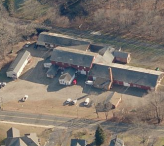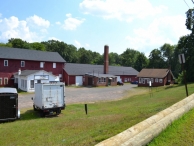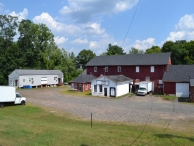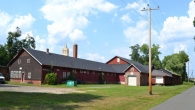Mill Record Southington
RETURN TO ‘FIND MILLS’Disclaimer: Content for these properties was compiled in 2014-2017 from a variety of sources and is subject to change. Updates are occasionally made under Property Information, however the Connecticut Trust for Historic Preservation (dba Preservation Connecticut) makes no representation or warranty that the information is complete or up-to-date.
- Complex Name (Common)
- Peck, Stow and Wilcox Co.
- Complex Name (Historic)
-
- Peck, Stow and Wilcox Co.
- Address or Location
- 141 Summer Street, Plantsville, Southington
- County
- Hartford
- Historic Designation
- Associated Mill Community
- n/a
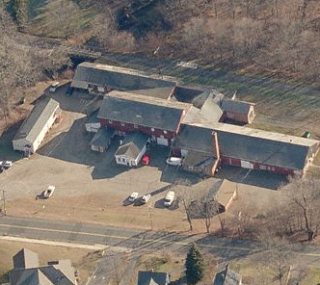
- Historic Information
Companies Associated w/Complex
- C.A. Cowles, Inc., Grain & Feed 1927-mid-20th c.
- Peck, Stow and Wilcox Co. 1884-1927
Use (Historic)
- Consumer Products, Small Appliances
- Fabricated Metal Products
- Other: Feed and grain processing.
Largest Documented Workforce
1,000 (1893, all plants).
Historic Narrative
The Peck, Stow and Wilcox Company was formed in 1870 as a result of the merger of three of the country’s most prominent manufacturers of tinsmiths’ tools and machinery. The firms involved in the transaction included the Peck, Smith Manufacturing Company of Southington, Connecticut (this with origins dating back to 1819); the S. Stow Manufacturing Company of the Plantsville section of Southington, Connecticut; and the Roys and Wilcox Company of East Berlin Connecticut. The company was incorporated in 1880 with $1.5 million in capital and by the early 1890s operated plants in Southington and East Berlin, Connecticut, and Cleveland, Ohio. Operations at Peck, Stow and Wilcox expanded greatly over the course of the late-19th century as additional lines of tools and home appliances were added to the initial manufacturing of tinsmiths’ tools. The firm erected its Summer Street plant in 1884 for the production of edge tools, which supplemented the output of tinsmiths’, carpenters’, machinists’, and blacksmiths’ tools; builders hardware; and appliances ranging from meat and food cutters to coffee mills and sausage stuffers, coming out of the company’s other factories. By 1893, Peck, Stow and Wilcox employed over 1,000 hands and paid out over $500,000 in wages. The Peck, Stow and Wilcox Company rebranded its tools lines under the “Pexto” moniker during the early 1920s. In 1927, the firm sold its Summer Street plant to C.A. Cowles, Inc., a grain and feed supply company owned and managed by Clarence A. Cowles. Peck, Stow and Wilcox operated its other Southington factories until 1950 when it was acquired by the Billings and Spencer Company of Hartford, Connecticut. Billings and Spencer preserved the Peck, Stow and Wilcox name and Pexto brand until it was in turn bought out by the Crescent Niagara Corporation in 1962.
- Architectural Information
Number of Existing Buildings
Roughly ten (10) primary blocks.
Dates of Construction
1884, ca. 1920, ca. 1927, ca. 1940, ca. 1950.
Architect
n/a
Builder
n/a
Building Type
Architectural Description
The former Peck, Stow and Wilcox Company edge tool works is comprised of roughly ten adjoining and freestanding blocks located on the east side of Summer Street, roughly 300’ south of Summer Street’s intersection with Knowles Avenue. The oldest portions of the complex comprise the core of the plant and consist of five one- and two-story wood-frame blocks and one one-story brick block, all erected ca. 1890. The frame blocks include the two-story, 92’ x 50’ grinding and polishing building; the one-story, 152’ x 54’ forge room; the one-story, 42’ x 40’ boiler plant; a one-story, 102’ x 34’ packing and storage building (this expanded to 118’ in length ca. 1927); and a one-story, 34’ x 27’ charcoal storage house. The forge room adjoins the south elevation of the grinding and polishing building, while the boiler plant is located on the east side of the intersection of these two blocks. The packing and storage building stands roughly 10’ east of the grinding and polishing block and the charcoal house is located 40’ west of the forge house. With the exception of the charcoal house, all of the wood-frame blocks have vertical board siding, six-over-six double-hung wood windows with plain wood surrounds, and pitched roofs. The charcoal house has vinyl siding and windows and a side-gabled roof. The brick block is a one-story, 25’ x 45’ tempering room located on the west side of the grinding and polishing building. It has stucco siding, six-over-one double-hung wood windows with stone sills, and a front-facing gable roof. Numerous additions to the plant were completed ca. 1927. These included a one-story, 34’ x 24’ red brick boiler house built adjoining the west elevation of the forge room; a one-story, 25’ x 75’ freestanding wood-frame feed storage building erected roughly 55’ north of the grinding and polishing block; and a one-story wood-frame ell constructed on the east side of the grinding and polishing building which linked it with the ca. 1890 storage block. Further additions of note include a one-story, 17’ x 32’ red brick diesel house with a hipped roof erected adjoining the northern end of the grinding and polishing building’s east elevation ca. 1940; and a one-story, 15’ x 50’ concrete block shipping ell with a shed roof built adjoining the north elevation of the grinding and polishing building ca. 1950.
Exterior Material(s)
Structural System(s)
Roof Form
Roof Material
Power Source
Condition
Fair
Condition Notes
The complex is in fair condition. A number of the exterior walls are in need of minor repairs or paint, however, most of the original windows throughout the plant appear to have been preserved and the complex overall is well maintained and appears sound.
- Property Information
-
Specific Location
One legal parcel (141 Summer Street) totaling 2.32 acres located on the east side of Summer Street, roughly 300’ south of Summer Street’s intersection with Knowles Avenue.
Adjacent To
Exterior Visible from Public Road?
Yes
Parcel ID / Assessor Record Link
- 087158. / Link →
Acreage
2.32
Use (Present)
- Sources
-
Form Completed By
Lucas A. Karmazinas
Date
08/17/2015
Bibliography
- List of Connecticut Manufacturers, 1922, 1924, 1930, 1932.
- Directory of Connecticut State Manufacturers, 1936, 1939.
- Industrial Directory of Connecticut, 1947.
- Register of War Production Facilities in Connecticut, 1951.
- Map of Hartford County, H & C.T. Smith, 1855.
- Atlas of Hartford County, Beers, Baker & Tilden, 1869.
- Sanborn Map Company, 1890, 1895, 1901, 1911, 1923, 1947.
- Aerial Survey of Connecticut, 1934, 1965.
- The Hartford Courant, 1892.
- History of Southington, Connecticut; Atwater, Francis, 1924.
- Representative View(s)Click on image to view full file
